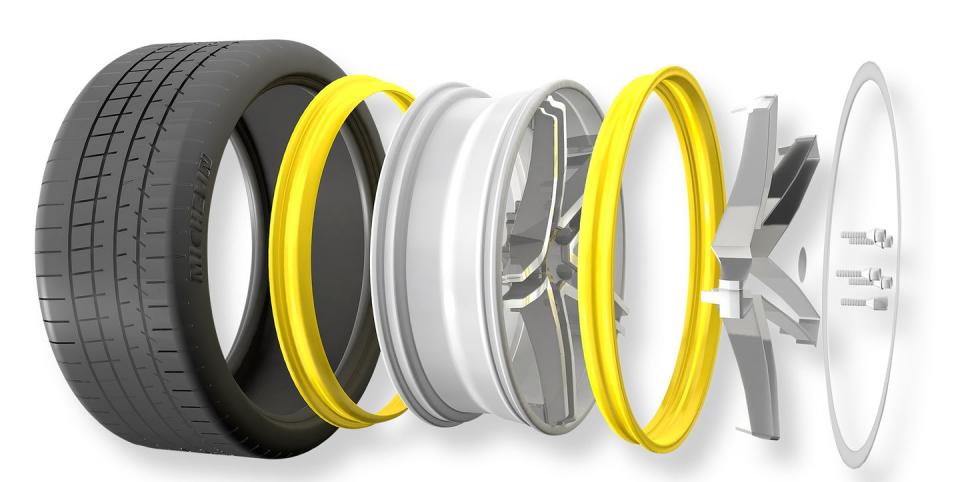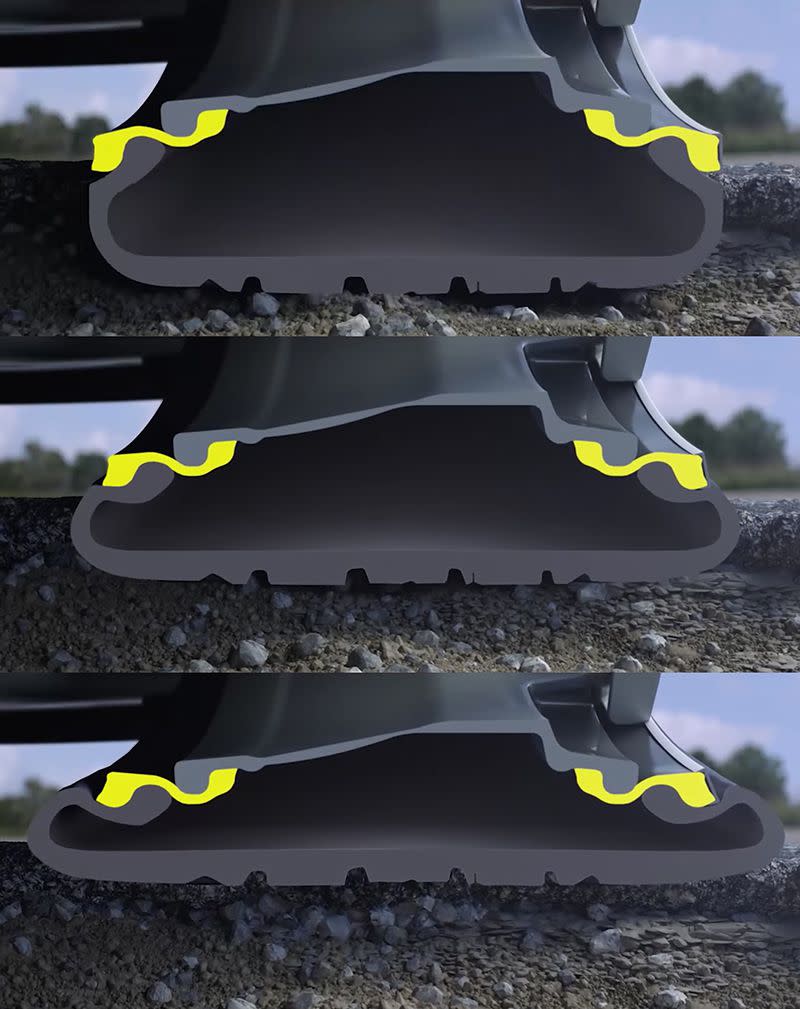How Michelin Is Trying to Reinvent the Wheel

From the July 2018 issue
The proliferation of low-profile tires is evidence that form often wins over function. This automotive fashion statement is wholly detached from our current reality of ever heavier vehicles pounding over increasingly derelict roads, and drivers pay the price when forced to replace damaged tires and/or wheels. With little hope of reining in automotive stylists, tire manufacturer Michelin has developed a wheel that bends to both designers’ desires and tire-eating potholes. The company’s flexible wheel soaks up the hard impacts that often result in torn and bulging sidewalls and bent and cracked wheels. Driving on it, Michelin engineers were able to hit a three-inch-deep test pothole at 34 mph without damaging a typical low-profile 285/30R-21 tire. The same pothole flattened an identical tire on a conventional wheel at half the speed.
Michelin’s innovation is a pair of flexible flanges, one mounted on each side of a specialized aluminum wheel. The company is coy about what’s inside these rubber-coated elements, only revealing that they use a construction similar to a tire’s. During a pothole strike, the flanges deform to protect both the tire sidewalls and the wheel.
The flexible wheel is narrower than a conventional one that takes the same-size tire, and its spokes stand proud of the rim so they sit nearly flush with the tire sidewall. An optional cosmetic finisher protects the wheel, hides the outer flange, fills the space between the spokes and the flange, and momentarily deflects as the flange presses into it during impacts.

Any tire can be mounted on the flexible wheel with equipment that’s commonplace in tire shops. Michelin only advises against installing run-flats. Without pressure in the tire, the flexible wheel’s flanges will fail within 10 miles, well short of the tire’s 50-mile run-flat range.
The wheel’s additional compliance has the added benefit of reducing impact harshness and noise, and Michelin claims that there’s no penalty to rolling resistance, tire life, or measurable handling performance. The company says pro drivers have logged the same Nürburgring lap times on the flexible wheel as they did on a traditional setup, although some of the drivers reported less steering feedback from the flanged wheel.
Under development since 2012, the deformable wheel should hit the road in the coming year. Wheel manufacturer Maxion has licensed the technology from Michelin and is engaged in development programs with multiple automakers. The first factory fitment will likely be on a luxury car with 19-inch or larger wheels. When that happens, form will have found its match in function.

DOT Approved
Driverless vehicles will need solutions for a slew of new problems, tires being one of them. Navya, a French manufacturer of automated shuttles, believes Michelin’s flexible wheels could compensate for computers that don’t steer around potholes; its Autonom Cab wore the rims for its CES debut.
You Might Also Like

 Yahoo Autos
Yahoo Autos 